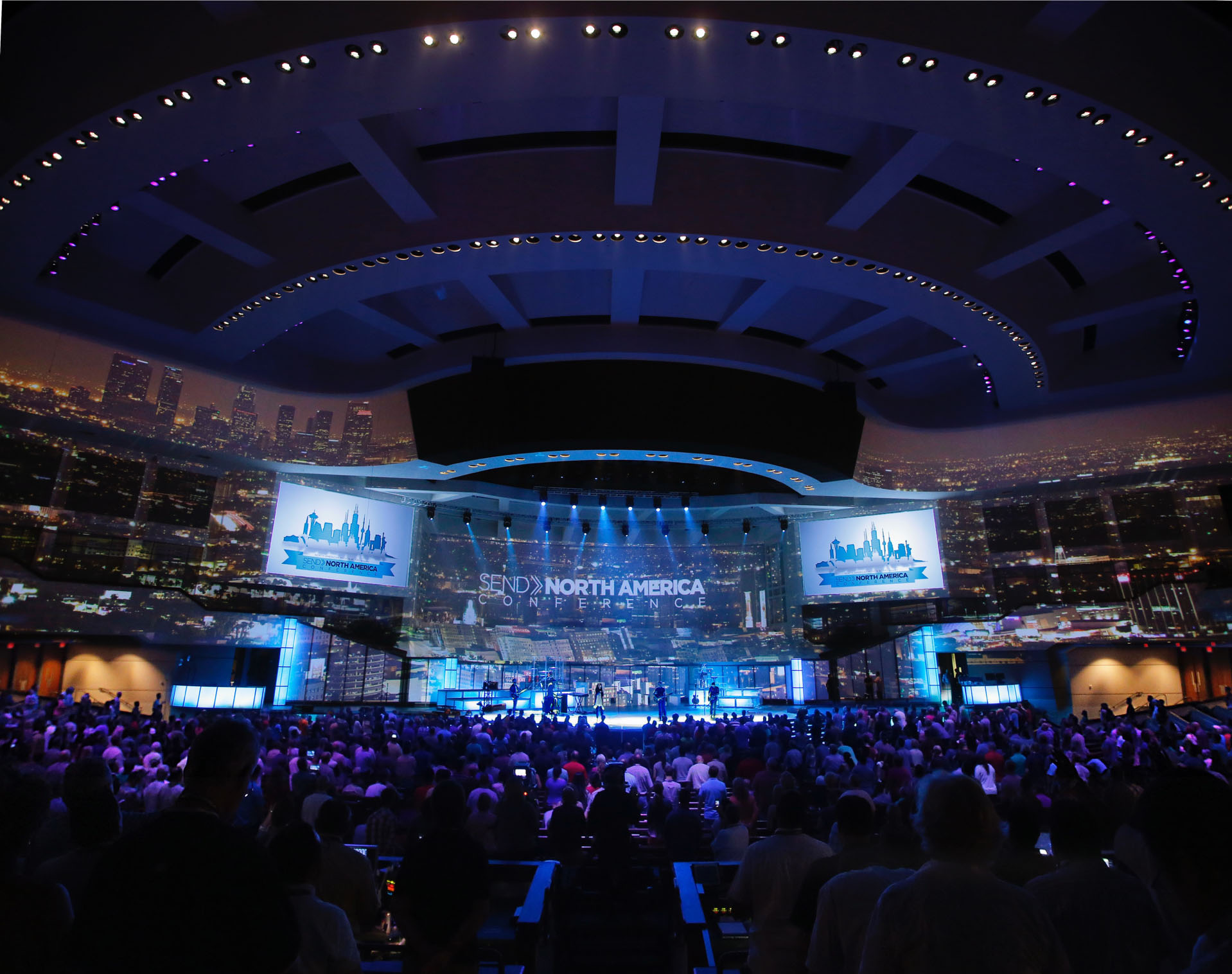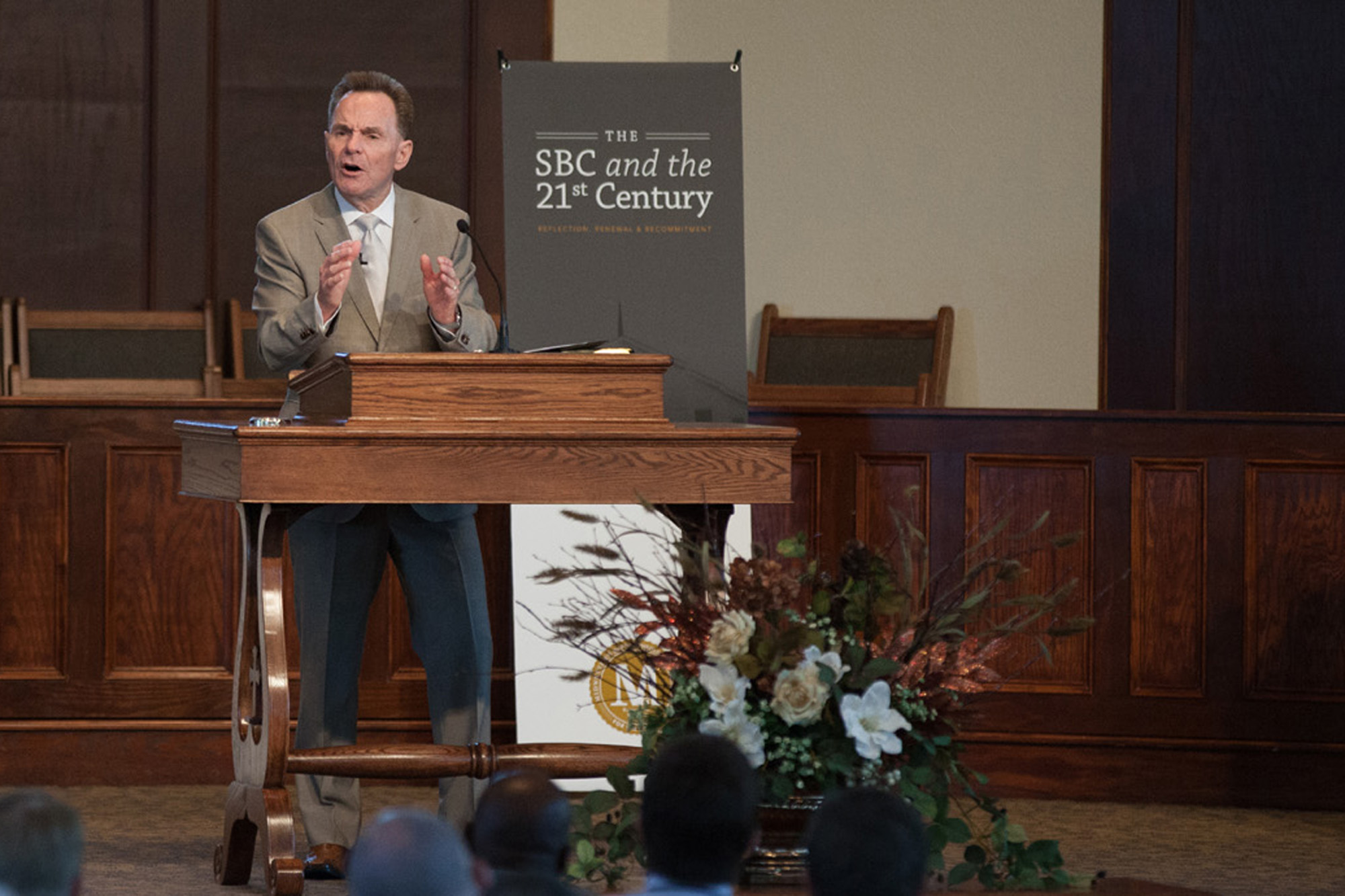
Editor’s Note: In this year’s Pre-Convention Issue (May 2012), SBC LIFE published four essays on the Lord’s Supper, three of which addressed who properly may participate. These positions were “from more to less open,” “close,” and “closed.” Shortly thereafter, LifeWay Research released a study that revealed the majority of pastors embrace a more open position than The Baptist Faith and Message seems to indicate. In light of these findings, SBC LIFE asked James Patterson, professor of church history at Union University, to address the local and universal impulses in Baptist ecclesiology that frame this continuing conversation in Southern Baptist life.
 When LifeWay Research released a study of Lord’s Supper practices in Southern Baptist churches (Baptist Press, September 17, 2012), it created an immediate buzz among pastors, columnists, and denominational bloggers. Since The Baptist Faith and Message ties participation in the Lord’s Supper to baptism and church membership (Article VII), it sounded a discordant note when LifeWay Research revealed that more than half of Southern Baptist pastors invite all “faithful believers” in attendance to participate in the Lord’s Supper (52 percent). Only 35 percent of pastors view baptism as a prerequisite to the Lord’s Table. A mere 4 percent limit participation to local church members, which means that 96 percent of Southern Baptist congregations allow non-members to take part in communion.
When LifeWay Research released a study of Lord’s Supper practices in Southern Baptist churches (Baptist Press, September 17, 2012), it created an immediate buzz among pastors, columnists, and denominational bloggers. Since The Baptist Faith and Message ties participation in the Lord’s Supper to baptism and church membership (Article VII), it sounded a discordant note when LifeWay Research revealed that more than half of Southern Baptist pastors invite all “faithful believers” in attendance to participate in the Lord’s Supper (52 percent). Only 35 percent of pastors view baptism as a prerequisite to the Lord’s Table. A mere 4 percent limit participation to local church members, which means that 96 percent of Southern Baptist congregations allow non-members to take part in communion.
The strong reaction to this survey by the leaders of churches that practice “closed” or “close” communion is hardly surprising. It is clear that “fencing the table” is not the default mode for the majority of the Southern Baptist constituency at this point in our history.
The apparent widespread acceptance of open communion in Southern Baptist churches might be dismissed by critics as the benign neglect of a distinctively Baptist ecclesiology in a post-denominational age or, more seriously, a capitulation to pragmatism.
Defenders of the less restricted table might respond that both the 1963 and 2000 Baptist Faith and Message statements include an expanded affirmation of the church as “the Body of Christ which includes all the redeemed of all the ages,” perhaps invoking that phrase as a rationale for their position.
Neither side, however, seems especially attuned to some important dimensions of the Baptist heritage that may shed light on the seeming contradiction between certain communion practices and The Baptist Faith and Message, the most prominent doctrinal guideline in Convention life. A sharpened historical perspective may help clarify the current state of affairs.
Since both General and Particular Baptists in the seventeenth century sprang from English Separatism, they naturally embraced a largely local understanding of the church that emphasized visible, independent congregations. In particular, Separatists distinguished their voluntary and gathered churches from the mandated parishes of the Church of England. As frequently persecuted minorities, the Separatists and their Baptist cousins specifically resisted the universalizing oppression of the state church as they defended what they were doing locally in their autonomous congregations.
Seventeenth-century Baptists, nonetheless, realized that the work of the Kingdom transcended the agendas of individual churches. For instance, the General Baptists—who were the first to develop associations—demonstrated a keen appreciation for the church universal in their Orthodox Creed of 1678. These Arminian Baptists declared that the visible church “is made up of several distinct congregations, which make up that one catholic church, or mystical body of Christ” (Article XXX). Moreover, they identified with the broader Christian tradition by attaching three ancient creeds (the Nicene Creed, the Apostles Creed, and the Athanasian Creed), which were set forth as containing essential doctrinal truths that were consistent with Scripture (Article XXXVIII). In fact, one of the purposes of the 1678 document was to unify all English Protestants against the errors of the Roman Catholic Church, which had added certain teachings that went well beyond the fundamental beliefs of the early creeds.
Likewise, the English Particular or Calvinistic Baptists effectively brought together local and universal impulses, even though they initially showed a reluctance to support ecclesiastical structures that might threaten the autonomy of their indigenous congregations. By the late seventeenth century, their Second London Confession dovetailed quite well with the Presbyterian Westminster Confession at a time when all Protestant dissenters found themselves in an adversarial relationship with the established church. Religious liberty represented one of those causes that would not have been well served by a narrow localism.
Similar to the Orthodox Creed, the Second London Confession simultaneously sought to safeguard the prerogatives of independent congregations while upholding the universal church, which, it argued, “consists of the whole number of the Elect, that have been, are, or shall be gathered into one, under Christ the head thereof” (Chapter XXVI).
Perhaps the overall ecclesiastical setting in England—coupled with an explicit concept of the church universal—led these Particular Baptists to avoid explicitly connecting participation in the Lord’s Supper to baptism or church membership (Chapter XXX; see especially Number 7, which speaks without elaboration of “worthy receivers,” and Number 8, which excluded “all ignorant and ungodly persons”).
Indeed, English Baptists in the late seventeenth century appeared to have arrived at an ecclesiological consensus that balanced local and universal interests. Most General and Particular Baptists spurned restrictive communion policies, although some Particular Baptists had previously voiced opposition to John Bunyan’s practice of open communion in his Bedford church (which some would argue was not a decidedly Baptist assembly).
Baptists in America generally experienced more difficulties in bringing together the particular concerns of local congregations and the broader issues of Kingdom work. The Philadelphia Confession, adopted at the associational level by Regular Baptists in 1742, echoed the Second London statement, including its ecclesiological viewpoint. While there was no genuine Baptist “denomination” in the United States prior to 1845, many Baptists North and South had cooperated in organizations like the Triennial Convention, which was launched in 1814 primarily as a foreign missions enterprise. Furthermore, some Baptists enthusiastically participated in revivals and benevolent ventures that were often interdenominational in character.
Some Baptists, however, remained suspicious of agencies and programs beyond the local level. In New England, the Separate Baptist tradition, which flourished between the First Great Awakening and the early 1800s, vigorously promoted localism and freedom as they warned against those forces that could weaken independent churches, including established churches that still prevailed as late as 1818 in Connecticut and, in a modified fashion, 1833 in Massachusetts.
Although the Separate movement virtually disappeared in the early nineteenth century, its characteristic ecclesiology lived on in the careers of key New England Baptists like J. Newton Brown, who wrote and popularized the “Church Covenant” still used in many Southern Baptist congregations, and Francis Wayland. These leaders did not entirely discount the importance of efforts beyond local contexts; but they focused more on autonomous churches and fretted over centralizing forces such as mission boards that might jeopardize the rights of individual congregations. In particular, Brown contributed significantly to the New Hampshire Baptist Confession (1833), which was silent on the universal church (Article XIII) and overtly linked participation in the Lord’s Supper to baptism and membership (Article XIV). On the latter point, he probably was aware of earlier more restrictive precedents in seventeenth-century English Baptist life such as the addendum to the First London Confession of 1644, Article 39, which suggested baptism as a prerequisite to receiving the Lord’s Supper. Brown helped to circulate the New Hampshire Confession well beyond New England in his role as an agent for the American Baptist Publication Society.
Separate Baptist ecclesiology had a profound impact on the founder of Landmarkism (see my James Robinson Graves: Staking the Boundaries of Baptist Identity [B&H Academic, 2012]). Reared in Vermont, where he was baptized as a teenager in a Baptist church, Graves drew on the themes of localism and ecclesiastical freedom as he shaped a new movement in Baptist life that would exercise a far-reaching influence in the Southern Baptist Convention during its formative years. As editor of a state convention Baptist paper, first in Nashville and later in Memphis, this feisty journalist and preacher denied the doctrine of the universal church and eventually advanced the practice that restricted the Lord’s Supper to the members of a local congregation. Even though he participated in denominational entities like associations and conventions, he feared that agencies like the Foreign Mission Board (now the IMB) would detract from and undermine the legitimate mission work of independent churches.
The Landmark patriarch was “Baptocentric” in his ecclesiology as he espoused a successionist theory of Baptist history and insisted that only Baptist churches were true churches. Indeed, he dismissed non-Baptist ecclesiastical organizations as mere “societies” that lacked genuine gospel authority and leadership; thus they should not be regarded as churches. One can appreciate his ardent desire to rally local Baptist churches to the missionary task. At the same time, he downplayed the value of cooperative denominational ventures and bequeathed a sectarian legacy that virtually ignored the larger Kingdom picture. Graves represented a Baptist voice that emphasized a convictional localism, which in turn neglected the more universal impulses of many of his Baptist forebears.
The intense localism of Brown and Graves helps to explain why the original Baptist Faith and Message, adopted in 1925, omitted any reference to the church universal (Article XII). First, the 1925 statement used Brown’s New Hampshire Confession as a foundation; the two documents are not identical, but the ecclesiology is very similar. Second, there was enough of a Landmark influence in the early twentieth century that denominational leaders were probably wary about alienating the successors to Graves by defining the church beyond the local, visible assembly. The impact of the New Hampshire Confession continued to be seen in the 1963 and 2000 renditions of The Baptist Faith and Message in that the affirmations on baptism and the Lord’s Supper have not substantively changed from what was set forth in 1925 (compare Article XIII in 1925 with Article VII in both 1963 and 2000). The key difference is that the focused localism of the 1925 statement is balanced in the 1963 and 2000 versions with support for the concept of the universal church (see Article VI).
In light of current practices in Southern Baptist churches, I am confident that the Convention will continue to assess how best to affirm both the local and universal impulses of our ecclesiology in the contemporary setting. On one hand, we certainly do not want to blur our denominational distinctives, especially regarding baptism and the Lord’s Supper. On the other hand, we live in an increasingly hostile culture where evangelicals from several denominational perspectives may well need to join together in some common causes for the sake of the Gospel. Wisely or unwisely, perhaps the practice of a less restrictive Lord’s Supper represents an attempt to articulate a broader Kingdom vision for the battle against secularism and paganism.



















